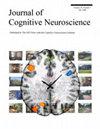Salient, Unexpected Omissions of Sounds Can Involuntarily Distract Attention
IF 3
3区 医学
Q2 NEUROSCIENCES
引用次数: 0
Abstract
Salient unexpected and task-irrelevant sounds can act as distractors by capturing attention away from a task. Consequently, a performance impairment (e.g., prolonged RTs) is typically observed along with a pupil dilation response (PDR) and the P3a ERP component. Previous results showed prolonged RTs in response to task-relevant visual stimuli also following unexpected sound omissions. However, it was unclear whether this was due to the absence of the sound's warning effect or to distraction caused by the violation of a sensory prediction. In our paradigm, participants initiated a trial through a button press that elicited either a regular sound (80%), a deviant sound (10%), or no sound (10%). Thereafter, a digit was presented visually, and the participant had to classify it as even or odd. To dissociate warning and distraction effects, we additionally included a control condition in which a button press never generated a sound, and therefore no sound was expected. Results show that, compared with expected events, unexpected deviants and omissions lead to prolonged RTs (distraction effect), enlarged PDR, and a P3a-like ERP effect. Moreover, sound events, compared with no sound events, yielded faster RTs (warning effect), larger PDR, and increased P3a. Overall, we observed a co-occurrence of warning and distraction effects. This suggests that not only unexpected sounds but also unexpected sound omissions can act as salient distractors. This finding supports theories claiming that involuntary attention is based on prediction violation.显著的,意想不到的声音遗漏会不自觉地分散注意力。
突出的、意想不到的和与任务无关的声音会分散人们对任务的注意力。因此,在瞳孔扩张反应(PDR)和P3a ERP成分的同时,通常会观察到表现障碍(例如,延长的RTs)。先前的研究结果表明,在意外的声音遗漏之后,与任务相关的视觉刺激的反应时间也会延长。然而,目前尚不清楚这是由于缺乏声音的警告效果,还是由于违反感官预测而引起的分心。在我们的范例中,参与者通过按下按钮来启动试验,该按钮会发出正常声音(80%)、异常声音(10%)或没有声音(10%)。之后,一个数字呈现在视觉上,参与者必须将其分类为偶数或奇数。为了分离警告和分散注意力的影响,我们还加入了一个控制条件,在这个条件下,按钮按下不会产生声音,因此不会产生声音。结果表明,与预期事件相比,意外偏差和遗漏导致RTs延长(分心效应)、PDR增大和p3a样ERP效应。此外,与无声音事件相比,声音事件产生更快的RTs(警告效应),更大的PDR和增加的P3a。总的来说,我们观察到警告和分心效应同时发生。这表明,不仅意外的声音,而且意外的声音遗漏也可能成为显著的干扰因素。这一发现支持了非自愿注意是基于违背预测的理论。
本文章由计算机程序翻译,如有差异,请以英文原文为准。
求助全文
约1分钟内获得全文
求助全文
来源期刊
CiteScore
5.30
自引率
3.10%
发文量
151
审稿时长
3-8 weeks
期刊介绍:
Journal of Cognitive Neuroscience investigates brain–behavior interaction and promotes lively interchange among the mind sciences.

 求助内容:
求助内容: 应助结果提醒方式:
应助结果提醒方式:


